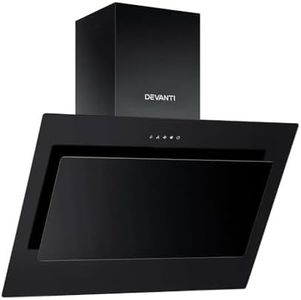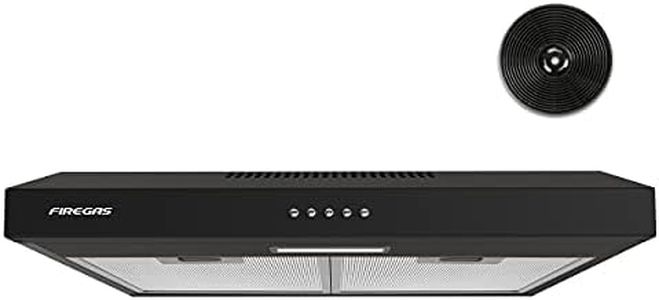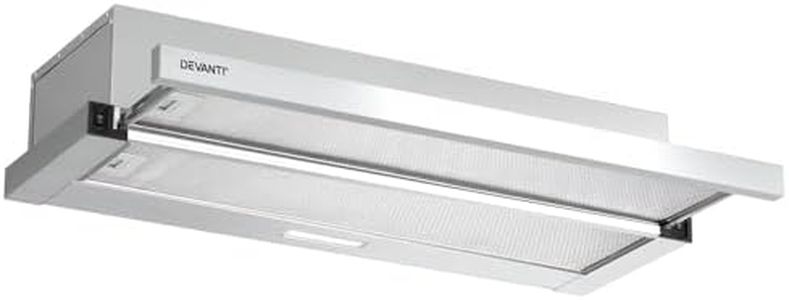We Use CookiesWe use cookies to enhance the security, performance,
functionality and for analytical and promotional activities. By continuing to browse this site you
are agreeing to our privacy policy
5 Best Ductless Range Hoods
From leading brands and best sellers available on the web.Buying Guide for the Best Ductless Range Hoods
When shopping for a ductless range hood, it's important to recognize that these devices help remove cooking odors, smoke, and grease from your kitchen without needing to vent air outside. Ductless range hoods use filters to clean the air and then circulate it back into the room. The right choice depends on your kitchen size, cooking habits, and specific needs like noise level and ease of cleaning. Understanding each key specification will help you make the best selection for your home.Airflow (CFM)Airflow, measured in cubic feet per minute (CFM), indicates how much air the range hood can filter and move in a minute. This is important because it determines how effectively the hood can remove smoke and odors from your kitchen. Lower CFM values are usually suitable for light cooking or smaller kitchens, while higher CFMs are needed for frequent cooking or larger spaces. Think about how much and what type of cooking you typically do; for simple tasks like boiling water, a lower airflow may suffice, but for frequent frying or grilling, choose a higher CFM.
Filter TypeDuctless range hoods use filters to clean the air, and the main types are charcoal (carbon) and mesh filters. Charcoal filters are effective at removing odors, while mesh filters are better for trapping grease. Often, ductless range hoods use a combination of both. Choosing the right filter depends on your cooking style: if you regularly cook aromatic foods, prioritize strong odor filtration with charcoal; if you do a lot of frying, make sure the hood uses durable and easy-to-clean grease-trapping filters. Check if the filters are washable or need frequent replacing to fit your maintenance preferences.
Noise Level (dB)Noise level, measured in decibels (dB), tells you how loud the hood will be when running. Range hoods can be surprisingly noisy, especially at higher settings. Quiet models are generally below 60 dB, moderate ones are in the 60-70 dB range, and anything higher may become disruptive, especially in open-plan spaces. If you spend a lot of time in your kitchen or have sensitive hearing, opt for a quieter model.
Size (Width)The width of a ductless range hood typically ranges from 24 to 36 inches. This specification should match or be slightly wider than your cooktop or stove to provide effective coverage. Choosing the right size ensures that smoke, grease, and odors are properly captured and filtered. Measure your cooking area before shopping so you’re sure to get a good fit.
LightingMany ductless range hoods come with built-in lights to help you see while cooking. These lights can vary in brightness and type, such as LED or halogen. Good lighting improves kitchen safety and makes cooking easier. If you have poor lighting over your stove, look for a range hood with powerful, bright lights; if your kitchen is already well-lit, lighting may be less of a concern.
ControlsControls for ductless range hoods come in various forms, such as push buttons, touch panels, or even remote controls. Simple push buttons are durable and easy to use, while touch panels can look sleeker but may be more sensitive to greasy fingers. Think about who will be using the hood and how often; for everyday family use, prioritize easy, accessible controls.
Installation and MaintenanceInstallation for ductless range hoods is generally easier than ducted models, but check whether it offers wall-mount, under-cabinet, or convertible setups to suit your kitchen layout. Also, consider access to filters for regular cleaning or replacement. If you aren’t handy with tools, look for a hood that advertises simple installation and easy filter access.





